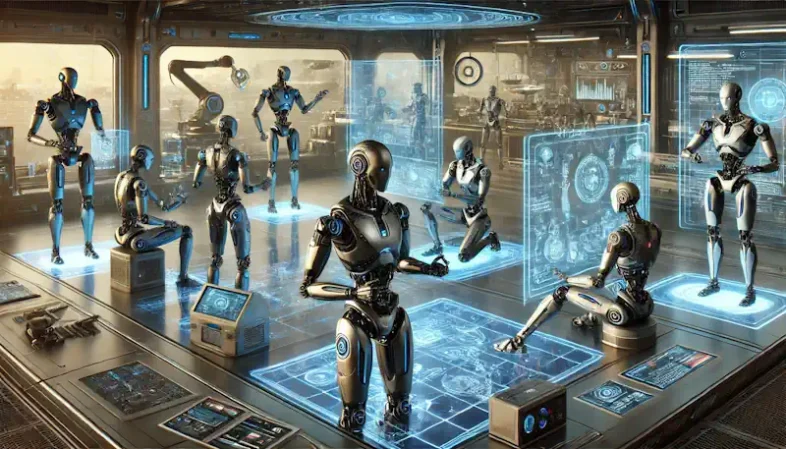In a groundbreaking development, researchers at MIT’s Computer Science and Artificial Intelligence Laboratory (CSAIL) have unveiled the “Estimate, Extrapolate, and Situate” (EES) algorithm, a novel approach that enables robots to train themselves and adapt to new environments and tasks. This innovation is set to transform the field of robotics, offering a glimpse into a future where robots can operate more autonomously and efficiently.
Table of Contents
The Core of EES: Integration with Language Models
The EES algorithm stands out due to its integration with large language models (LLMs), which provide robots with a form of “common sense knowledge.” This integration allows robots to deconstruct complex tasks into manageable subtasks and adjust their actions based on situational changes. By grounding the robot’s physical state in natural language labels, the algorithm facilitates self-correction, enabling robots to handle disruptions without needing to restart tasks[1][6].
Self-Training and Adaptation
One of the most significant advantages of the EES algorithm is its ability to allow robots to self-train. This capability means that robots can learn from their mistakes and improve over time without extensive human intervention. For instance, in experiments with Boston Dynamics’ Spot robot, the EES algorithm enabled the robot to learn tasks such as placing objects on a slanted table and sweeping toys into a bin in just a few hours—tasks that would have previously taken much longer[5].
Implications for the Future of Robotics
The implications of this technology are vast. By reducing the need for extensive programming and enabling robots to adapt to new tasks and environments, the EES algorithm could significantly lower deployment costs and increase the versatility of robotic systems across various industries. This could lead to more advanced home assistance robots capable of performing a wide range of tasks, from elder care to complex household chores[3][5].
Challenges and Future Prospects
Despite its promise, the EES algorithm does face challenges. Current limitations include the need for optimized hardware and the ability to accurately detect and identify objects. However, researchers are optimistic about overcoming these hurdles. Future developments may include combining real and virtual practice to accelerate learning and enhance the system’s efficiency[5].
In conclusion, MIT’s EES algorithm represents a significant step forward in the evolution of self-training robots. By enabling more autonomous, flexible, and efficient robotic systems, this technology has the potential to revolutionize how robots are integrated into everyday life and various industries. As research continues, we can expect to see even more sophisticated and capable robots emerging from this innovative approach.
Citations:
[1] https://www.reddit.com/r/singularity/comments/1epd1aq/mits_algorithm_for_selftraining_robots/
[2] https://www.livarava.com/technology/p/4135021
[3] https://www.techspot.com/news/104193-robots-can-now-train-themselves-new-practice-makes.html
[4] https://www.forwardpathway.us/ees-algorithm-a-new-breakthrough-in-enhancing-robot-autonomous-learning
[5] https://news.mit.edu/2024/helping-robots-practice-skills-independently-adapt-unfamiliar-environments-0808
[6] https://news.mit.edu/2024/engineering-household-robots-have-little-common-sense-0325


